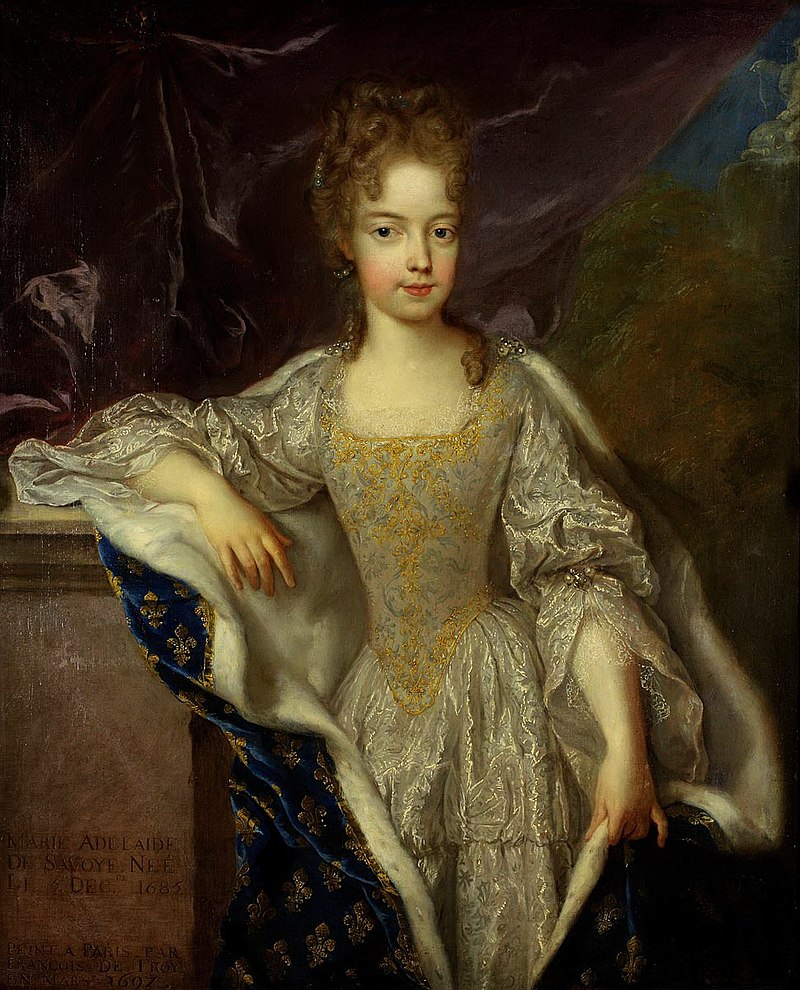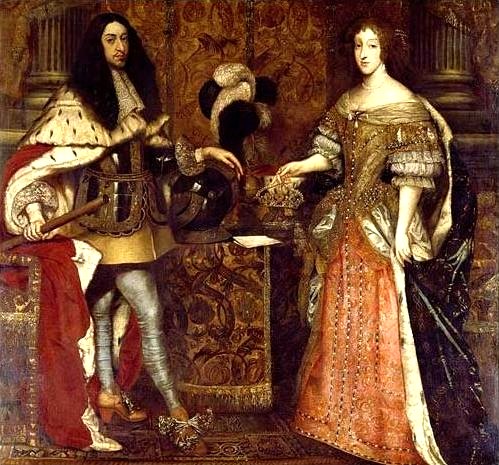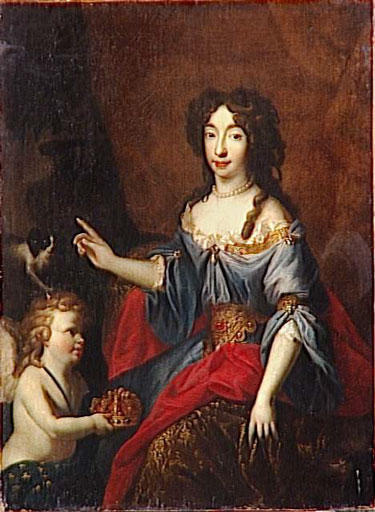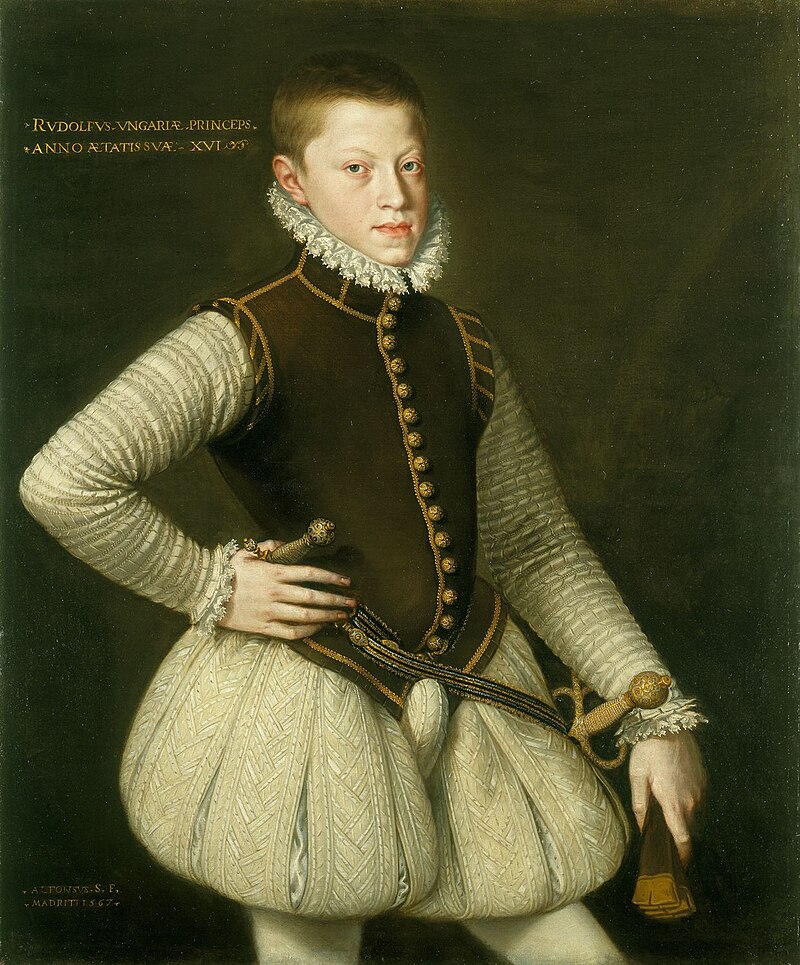by Susan Flantzer
© Unofficial Royalty 2023

Prince Karl Emich of Leiningen; Credit – By Anton Bakov, CC BY-SA 4.0, https://commons.wikimedia.org/w/index.php?curid=37446163
Prince Karl Emich of Leiningen, also known by his Russian Orthodox Russian name Nikolai Kirillovich Romanov, has been one of the disputed pretenders to the Headship of the Russian Imperial Family and the throne of Russia since 2013. The Headship of the Russian Imperial Family and succession to the former Russian throne has been in dispute, mainly due to disagreements over whether marriages in the Romanov family were equal marriages – a marriage between a Romanov dynast and a member of a royal or sovereign house. The Monarchist Party of Russia recognizes Prince Karl Emich of Leiningen as the heir to the Russian throne and the Head of the Russian Imperial House. Karl Emich’s claim is interesting and one that is not well known.
- Line of Karl Emich from Alexander II: Alexander II, Emperor of All Russia → Grand Duke Vladimir Alexandrovich of Russia → Grand Duke Kirill Vladimirovich of Russia → Grand Duchess Maria Kirillovna of Russia → Emich, 7th Prince of Leiningen → Prince Karl Emich of Leiningen
The Principality of Leiningen was created in 1803 when properties owned by the Catholic Church were confiscated. The House of Leiningen-Dagsburg-Hardenburg was compensated for their possessions on the left bank of the Rhine in the Palatinate with a land from the former Electorate of Mainz, Electorate of the Palatinate and the Electorate-Bishopric of Würzburg. The combined territory was named the Principality of Leiningen. However, in 1806, the Principality of Leiningen had been mediatized – annexed to another state(s), while allowing certain rights to its former sovereign. The Principality of Leiningen ceased to exist and was divided between the Grand Duchy of Baden, the Kingdom of Bavaria, and the Grand Duchy of Hesse. The family retained Amorbach Abbey in Amorbach, which remains the family seat of the Princes of Leiningen. Therefore, Carl Friedrich Wilhelm was the first and the only actual reigning Prince of Leiningen. Queen Victoria’s mother Princess Victoria of Saxe-Coburg-Saalfeld was first married to Emich Carl, 2nd Prince of Leiningen and Queen Victoria had two half-siblings from this marriage, Karl, 3rd Prince of Leiningen and Princess Feodora of Leiningen, Princess of Hohenlohe-Langenburg.
Prince Karl Emich of Leiningen was born on June 12, 1952, in Amorbach, then in West Germany, now in the German state of Bavaria. He is the second of the four children and the elder of the two sons of Emich Kyrill, 7th Prince of Leiningen and Duchess Eilika of Oldenburg. Karl Emich’s paternal grandparents are Karl, 6th Prince of Leiningen and Grand Duchess Maria Kirillovna of Russia, the eldest daughter of Grand Duke Kirill Vladimirovich of Russia , a grandson of Alexander II, Emperor of All Russia, and Princess Victoria Melita of Edinburgh and Saxe-Coburg and Gotha, a granddaughter of both Queen Victoria and Alexander II, Emperor of All Russia. His maternal grandparents are Nikolaus, the last Hereditary Grand Duke of Oldenburg and his first wife, Princess Helena of Waldeck and Pyrmont, the daughter of Friedrich, the last reigning Prince of Waldeck and Pyrmont.
Karl Emich had three siblings:
- Princess Melita of Leiningen (born 1951), married Horst Legrum, no children
- Andreas, 8th Prince of Leiningen (born 1955), married Princess Alexandra of Hanover, had three children
- Princess Stephanie of Leiningen (1958 – 2017), unmarried
On June 8, 1984, Karl Emich married Princess Margarita of Hohenlohe-Öhringen (1960 – 1989), the daughter of Kraft, 8th Prince of Hohenlohe-Oehringe and Katharina von Siemens, from the family who founded Siemens AG, the German multinational technology conglomerate. Princess Margarita died in 1989 in a car accident.
Karl Emich and Margarita had one daughter:
- Princess Cécilia of Leiningen (born 1988)
Two years after the death of his first wife, on May 24, 1991, Karl Emich morganatically married Gabriele Renate Thyssen. Karl Emich’s parents refused to attend the wedding because their son broke an 1897 family law stipulating that family members must make an equal marriage. Karl Emich was formally disinherited, and when his father died on October 30, 1991, Karl Emich’s younger brother Andreas succeeded his father as the titular Prince of Leiningen. In 1998, Karl Emich and Gabriele divorced, and later that year, Gabriele became the second wife of the second wife of Aga Khan IV, the 49th Imam of the Nizari branch of the Shia Imami Ismaili Muslims.
Karl Emich and Gabriele had one daughter:
- Princess Theresa of Leiningen (born 1992)

Schloss Kunreuth; Credit – By Roland Rosenbauer – Own work, CC BY 3.0, https://commons.wikimedia.org/w/index.php?curid=16348059
Karl Emich married for a third time to Countess Isabelle von und zu Egloffstein in a civil ceremony on September 8, 2007, in Amorbach, Germany, and in a religious ceremony on June 7, 2008, in Pappenheim, Germany. Karl Emich and his family live in Schloss Kunreuth in Kunreuth, Bavaria, Germany, which is owned by Isabelle’s family.
Karl Emich and Isabelle have one son:
- Prince Emich Albrecht Karl of Leiningen (born 2010)
In 1998, Karl Emich initiated a lawsuit with the House of Leiningen regarding the deprivation of his inheritance due to his second morganatic marriage. The Leiningen family owns Amorbach Abbey, the family seat, and Waldleiningen Castle(link in German) both in Germany, 37,000 acres of land in Germany, 17,300 acres of forest in Canada, 5,000 acres on a farm in Namibia, an island near Ibiza, and industrial holdings. In 2000, the German Constitutional Court ruled that his father’s will, changed three weeks before his death from cancer, is legal and that Karl Emich’s second marriage violated the Leiningen family decree of 1897, which stipulated that members of the house could only enter into equal marriages.
The Monarchist Party of Russia recognizes Prince Karl Emich of Leinigen as the heir to the Russian throne and the Head of the Russian Imperial House.
Karl Emich is a great-grandchild of Grand Duke Kirill Vladimirovich of Russia, a male-line grandson of Alexander II, Emperor of All Russia. Kirill declared himself Guardian of the Throne and later assumed the title Emperor of All Russia in 1924, after Grand Duke Michael Alexandrovich (son of Alexander III, Emperor of All Russia and brother of Nicholas II, Emperor of All Russia) was declared legally dead.
Grand Duke Kirill Vladimirovich had three children, listed below. His daughter Grand Duchess Maria Kirillovna is the grandmother of Karl Emich.
- Grand Duchess Maria Kirillovna of Russia (1907 – 1951), married Karl, 6th Prince of Leiningen, had seven children including Emich Kyrill, 7th Prince of Leiningen, Karl Emich’s father
- Grand Duchess Kira Kirillovna of Russia (1909 – 1967), married Prince Louis Ferdinand of Prussia, had seven children
- Grand Duke Vladimir Kirillovich of Russia (1917 – 1992), married Princess Leonida Bagration-Mukhrani, had one child Grand Duchess Maria Vladimirovna, a current pretender
Upon the death of his father Grand Duke Kirill Vladimirovich in 1938, his son Grand Duke Vladimir Kirillovich was recognized as the Head of the Russian Imperial House by the Grand Dukes and Princes of Imperial Blood behind him in order of dynastic seniority and by the majority of the reigning houses of Europe. When Kirill Vladimirovich died in 1992, his only child Grand Duchess Maria Vladimirovna declared herself Head of the Russian Imperial Family.
The claim of Maria Vladimirovna as Head of the Russian Imperial Family is disputed by the Romanov Family Association made up of the majority of the male-line descendants of Nicholas I, Emperor of All Russia. Grand Duchess Maria Vladimirovna and father Grand Duke Vladimir Kirillovich, male-line descendants of Nicholas I, never joined. In 1992, with the support of the Romanov Family Association, Prince Nicholas Romanov claimed that he was the Head of the Imperial Family of Russia.
Karl Emich and his supporters argue that the marriage of Maria Vladimirovna’s parents was in contravention of the Pauline Laws, also an argument of the Romanov Family Association. They maintain that there is a precedent that a marriage between the House of Romanov and the House of Bragation-Mukhrani, the house of Leonida Bagration-Mukhrani, Maria Vladimirovna’s mother, was unequal. The House of Bragation-Mukhrani did not possess sovereign status and was not recognized as an equal marriage by Nicholas II, Emperor of All Russia for the purpose of dynastic marriages at the time of the marriage of Princess Tatiana Konstantinovna of Russia and Prince Konstantine Bragation-Mukhrani in 1911, thirty-seven years before the marriage of Princess Leonida of Bragation-Mukhrani and Grand Duke Vladimir Kirillovich of Russia. The couple married but Princess Tatiana Konstantinovna was required to renounce her rights to the Russian throne and she was no longer a member of the House of Romanov because the marriage was unequal.

Karl Emich and his third wife Isabelle on the day of the conversion to Russian Orthodoxy; Credit – Авторство: Anton Bakov. Anton Bakov, CC BY-SA 4.0, https://commons.wikimedia.org/w/index.php?curid=37446161
The Monarchist Party of Russia claims that Karl Emich is the heir of Grand Duke Kirill Vladimirovich through his elder daughter Maria Kirillovna and her eldest son Emich Kyrill, 7th Prince of Leiningen, Karl Emich’s father. The Monarchist Party of Russia recognized Karl Emich as the heir to the Russian throne, on June 1, 2013, the day Karl Emich and his third wife Isabelle converted from Lutheranism to Russian Orthodoxy. Karl Emich and Isabelle received the Orthodox names of Nikolai Kirillovich and Yekaterina Feodorovna.
However, because Karl Emich’s marriage to his third wife Isabelle would not have been deemed equal according to the Pauline Laws, their son Prince Emich, although considered a dynast of the House of Leiningen, cannot inherit his father’s claim to the headship of the House of Romanov. The claim will pass to his brother Andreas, 8th Prince of Leiningen and his descendants born of equal marriages upon the death of Karl Emich, and on the condition that they should convert to Russian Orthodoxy. However, there is no indication that Andreas is interested in this claim.
This article is the intellectual property of Unofficial Royalty and is NOT TO BE COPIED, EDITED, OR POSTED IN ANY FORM ON ANOTHER WEBSITE under any circumstances. It is permissible to use a link that directs to Unofficial Royalty.
Works Cited
- A Pauper Prince’s Palatial Quest (2000) The Guardian. Available at: https://www.theguardian.com/world/2000/jun/22/4 (Accessed: 24 July 2023).
- Prince Karl Emich of Leiningen (2023) Wikipedia. Available at: https://en.wikipedia.org/wiki/Prince_Karl_Emich_of_Leiningen (Accessed: 24 July 2023).
- Emich Kyrill, Prince of Leiningen (2023) Wikipedia. Available at: https://en.wikipedia.org/wiki/Emich_Kyrill,_Prince_of_Leiningen (Accessed: 24 July 2023).
- Principality of Leiningen (2020) Wikipedia. Available at: https://en.wikipedia.org/wiki/Principality_of_Leiningen (Accessed: 24 July 2023).
- Николай Кириллович Лейнинген-Романов (2023) Wikipedia (Russian). Available at: https://ru.wikipedia.org/wiki/%D0%9D%D0%B8%D0%BA%D0%BE%D0%BB%D0%B0%D0%B9_%D0%9A%D0%B8%D1%80%D0%B8%D0%BB%D0%BB%D0%BE%D0%B2%D0%B8%D1%87_%D0%9B%D0%B5%D0%B9%D0%BD%D0%B8%D0%BD%D0%B3%D0%B5%D0%BD-%D0%A0%D0%BE%D0%BC%D0%B0%D0%BD%D0%BE%D0%B2 (Accessed: 24 July 2023).






































